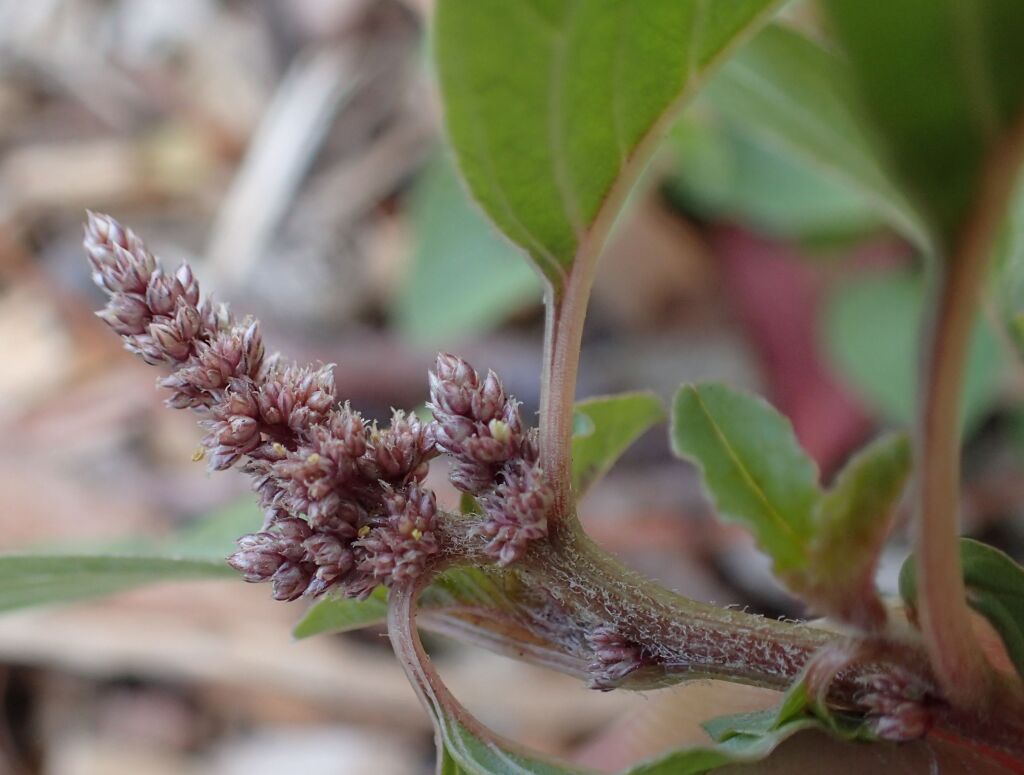Amaranthus deflexus
L. Spreading AmaranthProstrate perennial. Stems glandular-pubescent when young, spreading to c. 40 cm long. Leaves long-petiolate, rhombic-ovate, lamina 5–40 mm long, 3–25 mm wide; margin often finely undulate. Inflorescence usually rather dense, spike-like, sometimes branched near base, terminal, 1–5 cm long, smaller ovoid clusters usually in upper axils. Flowers unisexual; bracts and brac-teoles ovate to obovate, to c. 1 mm long; tepals 2 (rarely 3), narrowly obovate, c. 1.5 mm long, acute, or obtuse and mucronate; stamens 2 (rarely 3). Utricle indehiscent, distinctly exceeding perianth, flattened-obovoid or ellipsoid, 2.5–3 mm long, smooth or obscurely wrinkled; seed flattened-ellipsoid, brown, shiny, c. 1 mm diam. Flowers mainly Nov.–Mar.
LoM, Wim, VVP, VRiv, GipP, OtP, WaP, HSF, Strz. Also naturalised SA, NSW, ACT, Tas. Native to South America. An occasional weed of gardens, pavements, rail and stock yards, chiefly in southern parts of the State, often on heavy or compacted soils.
Walsh, N.G. (1996). Amaranthaceae. In: Walsh, N.G.; Entwisle, T.J., Flora of Victoria Vol. 3, Dicotyledons Winteraceae to Myrtaceae, pp. 199–215. Inkata Press, Melbourne.
 Spinning
Spinning


